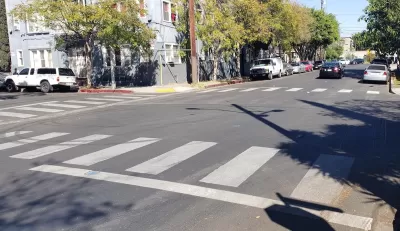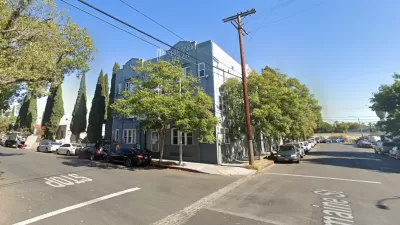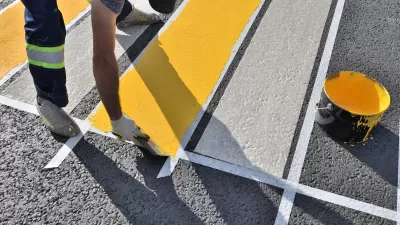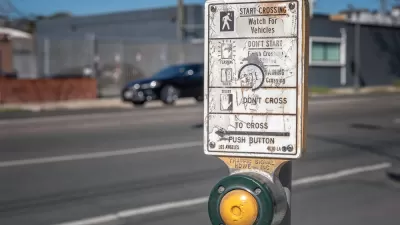Rather than take a hostile approach to DIY urbanism, some cities are using guerilla efforts as an opportunity to understand critical infrastructure gaps.

Around the country, groups like the Chattanooga Urbanist Society are taking on the failures of municipal agencies through ‘guerilla urbanism,’ reports Adina Solomon in Smart Cities Dive.
In Chattanooga, the Society has been installing homemade benches — 60 to date — at bus stops that lack seating — roughly 95 percent of Chattanooga bus stops.
Guerilla urbanists, Solomon explains, “develop low-cost, short-term interventions to serve community members and inspire long-term change. Whether they are installing bike lanes, planting gardens in vacant lots or painting crosswalks, guerrilla urbanists usually do not ask for government permission.”
“If something has happened in a city [that’s] strong enough to unite a group and make them publicly work towards a unified end together, something must be really wrong with that city,” said Jon Jon Wesolowski, founding member of the Chattanooga Urbanist Society. In Chattanooga, the city has been largely supportive of the Society’s efforts. In Los Angeles, the city has had a less friendly response to a group that paints crosswalks at dangerous intersections, citing concerns that the DIY crosswalks don’t meet state standards.
For Wesolowski and others, guerilla urbanism has the power to make people more aware of their public realm and the speed with which improvements can be deployed. Meanwhile, “Governments can take guerrilla urbanism activity as an opportunity to engage the local community and get residents involved in fixing issues.”
FULL STORY: Guerrilla urbanists are ‘doing it our damn selves’

Study: Maui’s Plan to Convert Vacation Rentals to Long-Term Housing Could Cause Nearly $1 Billion Economic Loss
The plan would reduce visitor accommodation by 25,% resulting in 1,900 jobs lost.

North Texas Transit Leaders Tout Benefits of TOD for Growing Region
At a summit focused on transit-oriented development, policymakers discussed how North Texas’ expanded light rail system can serve as a tool for economic growth.

Why Should We Subsidize Public Transportation?
Many public transit agencies face financial stress due to rising costs, declining fare revenue, and declining subsidies. Transit advocates must provide a strong business case for increasing public transit funding.

How to Make US Trains Faster
Changes to boarding platforms and a switch to electric trains could improve U.S. passenger rail service without the added cost of high-speed rail.

Columbia’s Revitalized ‘Loop’ Is a Hub for Local Entrepreneurs
A focus on small businesses is helping a commercial corridor in Columbia, Missouri thrive.

Invasive Insect Threatens Minnesota’s Ash Forests
The Emerald Ash Borer is a rapidly spreading invasive pest threatening Minnesota’s ash trees, and homeowners are encouraged to plant diverse replacement species, avoid moving ash firewood, and monitor for signs of infestation.
Urban Design for Planners 1: Software Tools
This six-course series explores essential urban design concepts using open source software and equips planners with the tools they need to participate fully in the urban design process.
Planning for Universal Design
Learn the tools for implementing Universal Design in planning regulations.
City of Santa Clarita
Ascent Environmental
Institute for Housing and Urban Development Studies (IHS)
City of Grandview
Harvard GSD Executive Education
Toledo-Lucas County Plan Commissions
Salt Lake City
NYU Wagner Graduate School of Public Service





























